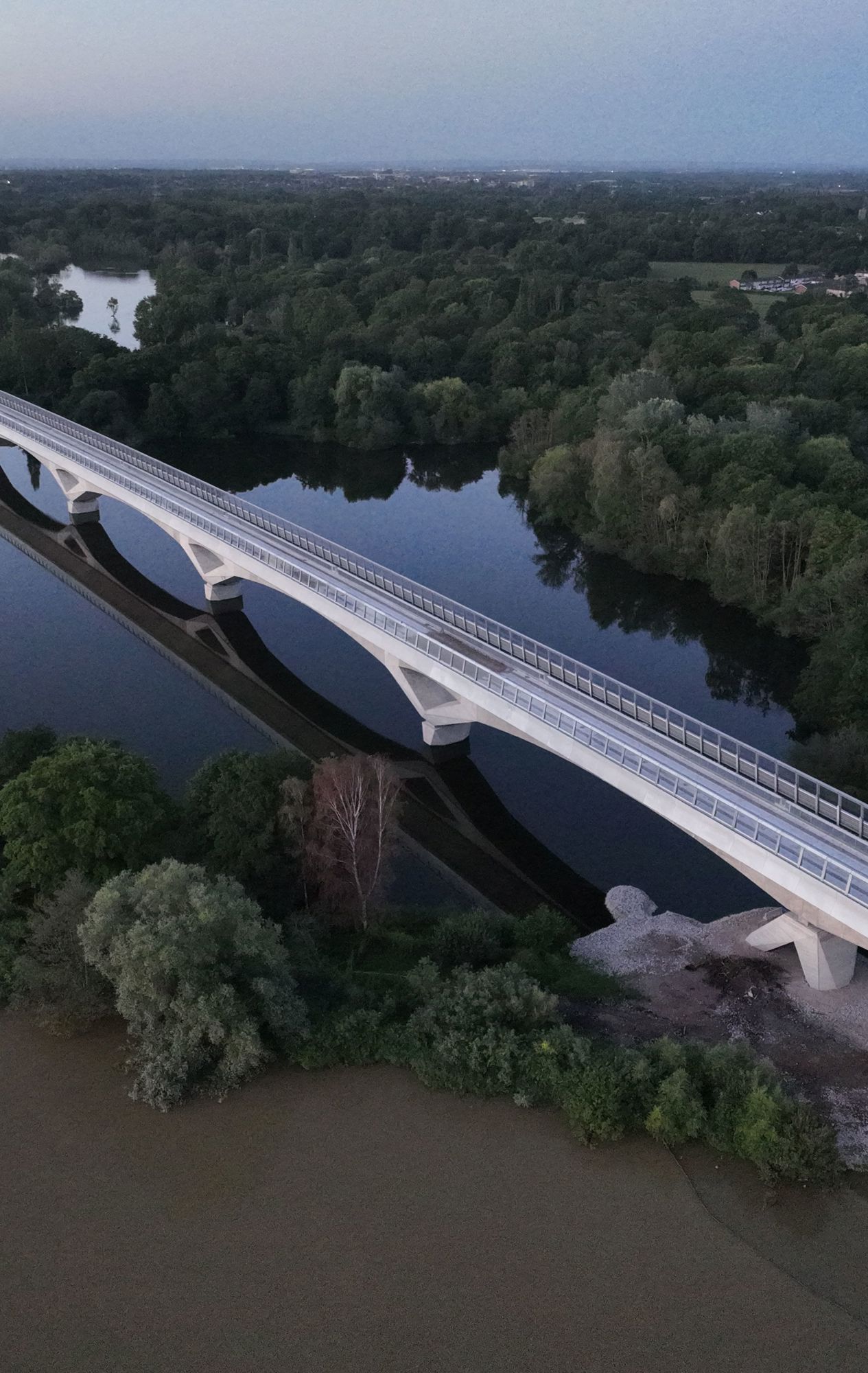A533 Bridge Replacement Wins Green Apple Award for Sustainability Excellence
The award is the latest in a string of plaudits for the project, which involved replacing an aging bridge over the M56 near Runcorn in Cheshire for National Highways.
The scheme is a shining example of how through our design and procurement and the development of a collaborative culture across all project partners we are able to deliver sustainable infrastructure which aligns to both our client's and our own sustainability requirements.
From the outset, the team’s aim was to deliver the project as sustainably as possible, with minimum disruption, limiting congestion and in line with the client’s Zero Carbon Roadmap.
The various measures introducing during the project resulted in an overall carbon saving of 1,029.7t Co2e.
Highlights included:
- The use of One Click LCA to calculate the embodied carbon from designs and to calculate the impact of design changes.
- Virtually all skip-based waste was recycled; no excess soils went off site to landfill.
- The promotion and use of HVO fuel along with intelligent generators, smart heating and lighting control brought savings in emissions. More than 128,540 litres of HVO was used instead of diesel.
- The outline design revised to reduce the bridge by 1.3m in width and 3m in span. This saved 82t of concrete and 8t of steel.

- The abutment design was reviewed and bored piles used in lieu of a sheet pile and mass concrete fill solution.
- All structural concrete mixes incorporated 40% GGBS.
- Temporary works aggregates were used up to four times with sequencing in various piling platforms and haul road solutions.
- 8,600m3 of structural fill was repurposed from the temporary works materials on completion and 12,400m3 of landscaping material was kept on site and incorporated into landscaping bunds meaning no excess material went to landfill.
- 4,900m3 of Type 1 subbase and fill materials from the bridge deck haul route were reused in the permanent works.
- All road plannings totalling some 960t were recycled, replacing primary aggregate in the local area.
- Resurfacing of the M56 was reduced from 16,170m2 to 3,311m2.
- The original bridge was processed on site with all metals going to recycling facilities and the concrete crushed and used in a nearby development.






